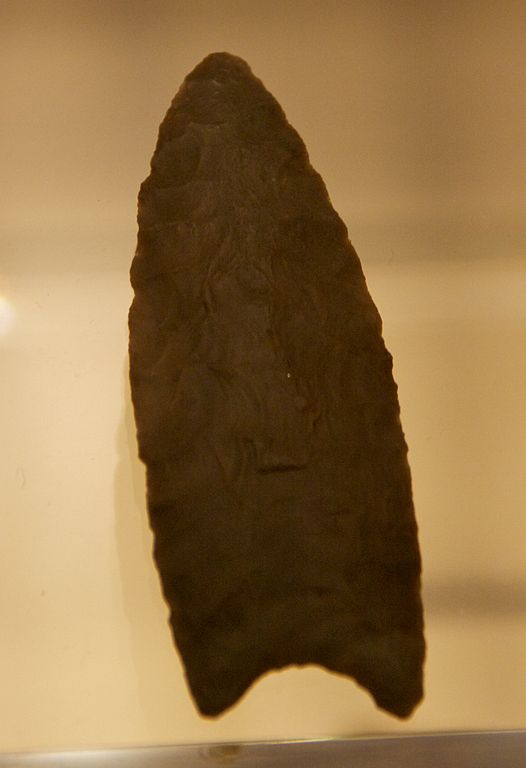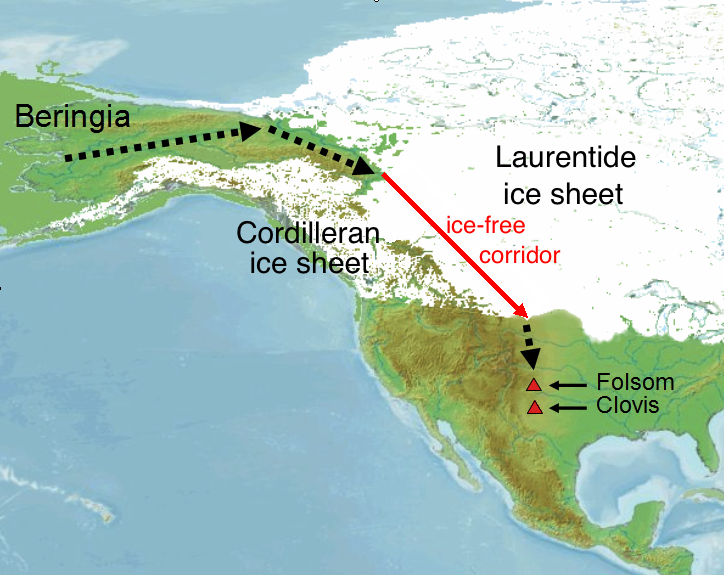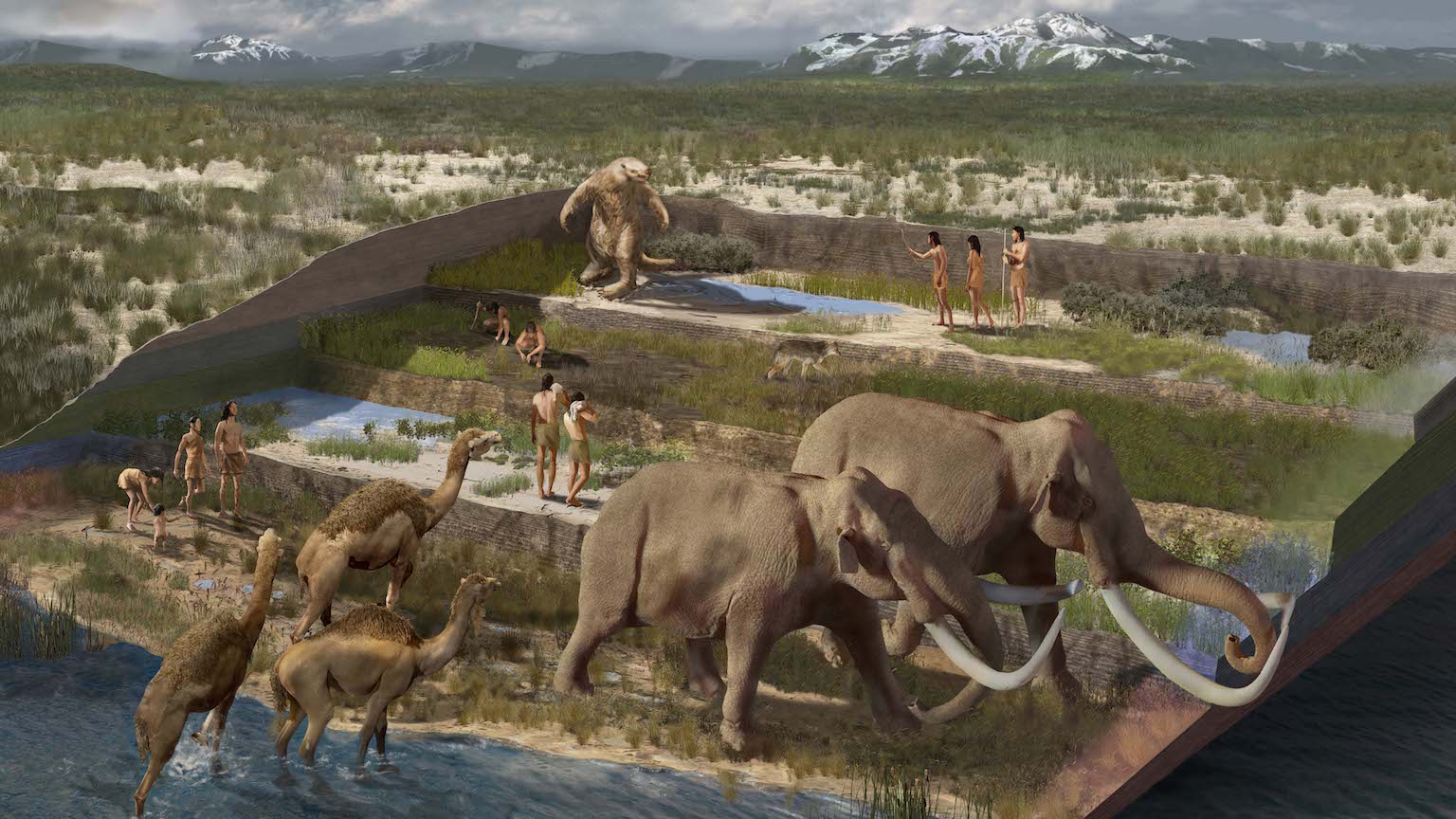Clovis debunked: America’s first settlers did not take the ice-free corridor

- Researchers long assumed ancient humans entered North America via an ice-free corridor about 13,000 years ago.
- However, a new study published in the journal PNAS used cosmogenic nuclide exposure dating to prove that the continent had already been populated when the corridor was still frozen over.
- Researchers now lean in favor of the so-called Pacific Coast Migration model, which proposes our ancestors traveled along the coastline instead.
In the 1930s, archaeologists discovered “Clovis culture” spear points on the Great Plains. These hunting tools were found next to the remains of mastodons, mammoths, and several extinct species of bison. The points were dated to around 11,000 years, making them the oldest fossil evidence for settlement in North America ever discovered at that time. It was an exciting discovery, one that refreshed debate on the migration patterns of early humans.
The question of when and how ancient humans arrived in the Americas is one of the biggest, most enduring mysteries of early human migration — all for the simple reason that North and South America separated from the other continents more than 80 million years ago. In the 16th century, a Spanish Jesuit scholar by the name of Fray Jose de Acosta theorized that the ancestors of today’s Native Americans crossed over from Asia on dry land that had since become submerged.
Future generations of researchers adopted De Acosta’s belief that America’s early settlers traveled on foot, and pointed to Beringia — a land bridge that once connected Alaska with northeast Asia — as their likeliest point of entry. This otherwise convincing story had one major plot hole: For much of the Late Pleistocene epoch, western Canada was covered by the Laurentide and Cordilleran Ice Sheets, which would have blocked access to the Great Plains.
To circumvent this plot hole, archaeologists like W.A. Johnson and Marie Wormington developed the bold but seemingly incontestable hypothesis that early humans chased their megafauna prey through an “ice-free corridor” that had briefly formed between the ice sheets and stretched through Alberta and British Columbia into the modern-day US. This, the academic community concurred, was the most probable explanation for the Clovis culture spear points.
The “Clovis First” hypothesis, as this idea is sometimes referred to, has long dominated discussion on early human migration into the Americas. Although many new research projects — from advances in our understanding of glaciology and plate tectonics to recent discoveries of even older fossils in parts of Central and South America — called this hypothesis into question, it has never been successfully debunked. That is, until now.
Putting a hypothesis to rest
The reason that researchers took more than 60 years to verify whether the ice-free corridor was used by ancient humans is that, for most of that time, they lacked the knowledge to do so. As Lional Jackson and Michael Wilson state in their literature review, attempts to verify the Clovis First theory have “relied on recently developed analytical techniques, including radiocarbon and cosmogenic exposure dating.”
One article published in 2016 by Cambridge University Press aggregated radiocarbon dates of the ice-free corridor from previous archaeological, geological, and palynological studies to determine that the “the corridor was not feasible as an early route until after 11,000 BP, or after the appearance of Clovis south of the continental glaciers.” This article confirmed widespread suspicion that the corridor was too inhospitable for early humans to have traversed.
Another study, published by the Proceedings of the National Academy of Sciences last March, provided even more convincing evidence that the Clovis First hypothesis was incorrect. A team of researchers led by Oregon State University professor Jorie Clark calculated the ages of 64 rock samples gathered from Alberta and British Columbia, the same region where the Laurentide and Cordilleran ice sheets are believed to have separated.

“We used a method known as cosmogenic nuclide exposure dating,” Louise Guillaume, a graduate geology student from Imperial College London who contributed laboratory work, explained in a press release posted on the school’s website. Cosmogenic exposure dating “is a ‘rock clock’ that essentially tells us how long rocks have lain exposed on Earth’s surface – after a glacier has retreated and left them behind and uncovered, for example.”
Using this rock clock, Clark’s team was able to date the opening of the ice-free corridor to about 13.8 thousand years, give or take 500 years. Even with this gracious margin of error, the study proves that the corridor did not open until after North America was already populated. “We have closed the door on the ice-free corridor,” study co-author Dylan Rood announced in the aforementioned press release, adding they had successfully put “the Clovis First theory to rest.”
The Ice-Free Corridor opened “similar to a zipper”
Although the study indicates that some parts of the ice-free corridor had opened up as early as 15,000 years ago, the corridor as a whole did not become ice-free until long after people arrived in the western hemisphere. Clark told Imperial College London that the corridor’s opening was “similar to a zipper” and that this zipper was “opened from the bottom first,” starting down south and “then unzipping from the top.”
There are other studies that argue the Clovis First hypothesis was incorrect. In the past few decades, archaeologists in South America discovered evidence of human settlement on the continent that is much, much older than Clovis points. Bone, charcoal, and sediment samples recovered from the Chiquihuite cave in North-Central Mexico by the Autonomous University of Zacatecas in 2012, for instance, were dated to 26,000 years, but may be as old as 33,000 years.

The Chiquihuite cave joins a half-dozen or so other excavations from Central and South America that predate the opening of the ice-free corridor. Equally ancient remains were found in the Andes mountains, the Amazon basin, the Patagonian steppe in Argentina, and on the Caribbean coast. “On the evidence of these early archaeological sites from more than 13,000 years ago,” yet another literature review echoes, “the Clovis-first model must be discarded.”
Of course, discarding the Clovis First model means that researchers must once again confront the intimidating question of when and how ancient humans arrived in the western hemisphere. As popular support for one hypothesis decreases, interest in another rises. Clark’s article leans in favor of the Pacific Coast Migration, or Kelp Highway, model, which proposes that America’s earliest settlers traveled down the Pacific coast rather than through the heartland of Canada.
Due to rising sea levels, the coastline along which these primordial pioneers may have originally journeyed is well out of current archaeological reach. Still, excavations from different parts of the world — including evidence of maritime transportation in greater Australia, which may have been colonized by people using watercraft as early as 50,000 years ago — make the Pacific Coast Migration model look equally if not more probable than the Clovis First hypothesis.





